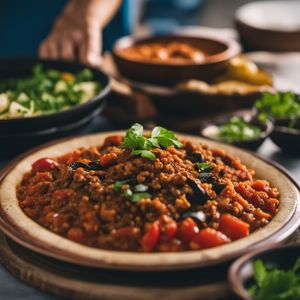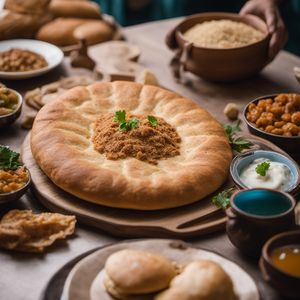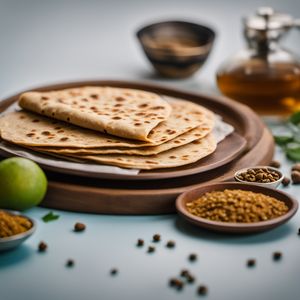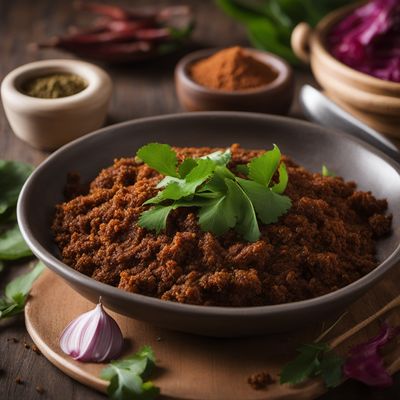
Dish
Kocho
Kocho is made by first harvesting the enset plant, which is also known as the false banana. The plant is then chopped into small pieces and buried in the ground for several months to allow it to ferment. Once the enset has fermented, it is dug up and the fibers are separated from the pulp. The fibers are then pounded into a dough-like consistency and shaped into flatbreads. The bread is then cooked on a hot griddle or in a clay oven. Kocho has a slightly sour taste and a chewy texture that is similar to sourdough bread.
Origins and history
Kocho has been a staple food in Ethiopia for centuries. It is believed to have originated in the southern part of the country, where the enset plant is most commonly grown. The bread is often served at special occasions such as weddings or religious festivals.
Dietary considerations
Kocho is suitable for vegetarians and vegans. It is also gluten-free and can be a good option for those with celiac disease or a gluten sensitivity.
Variations
There are many variations of Kocho, with different methods of preparation and cooking. Some recipes call for the addition of spices or herbs to the dough, while others use different types of flour to create a different texture or flavor.
Presentation and garnishing
Kocho can be presented on a woven basket or platter, garnished with fresh herbs or spices. It can also be cut into small pieces or wedges for easy serving.
Tips & Tricks
To make the perfect Kocho, be sure to use high-quality enset plant fibers and allow them to ferment properly. The dough should be pounded until it is smooth and elastic, and then cooked on a hot griddle or in a clay oven until it is golden brown and crispy.
Side-dishes
Kocho is often served with stews or other dishes, such as doro wat (spicy chicken stew) or kitfo (raw beef dish). It can also be eaten on its own as a snack or breakfast food.
Drink pairings
Kocho pairs well with traditional Ethiopian drinks such as tej (honey wine) or tella (a type of beer made from barley or wheat). It can also be served with coffee or tea.
Delicious Kocho recipes
More dishes from this category... Browse all »

Abud
Arab cuisine

Aish baladi
Egyptian cuisine

Aish merahrah
Egyptian cuisine

Ajwain paratha
Indian cuisine

Aloo naan
Indian cuisine

Amdo balep
Tibetan cuisine

Amritsari kulcha
Indian cuisine

Anda paratha
Indian cuisine
More cuisines from this region... Browse all »

Burundian cuisine
Spicy, Savory, Sweet, Tangy, Aromatic

Djiboutian cuisine
Spicy, Savory, Sweet, Tangy, Aromatic

Eritrean cuisine
Spicy, Flavorful, Tangy, Sour, Savory

Kenyan cuisine
Spicy, Flavorful, Tangy, Sour, Savory

Maasai cuisine
Savory, Meaty

Rwandan cuisine
Spicy, Savory, Sweet, Sour

Somali cuisine
Spicy, Savory, Aromatic

South Sudanese cuisine
Spicy, Savory, Aromatic

